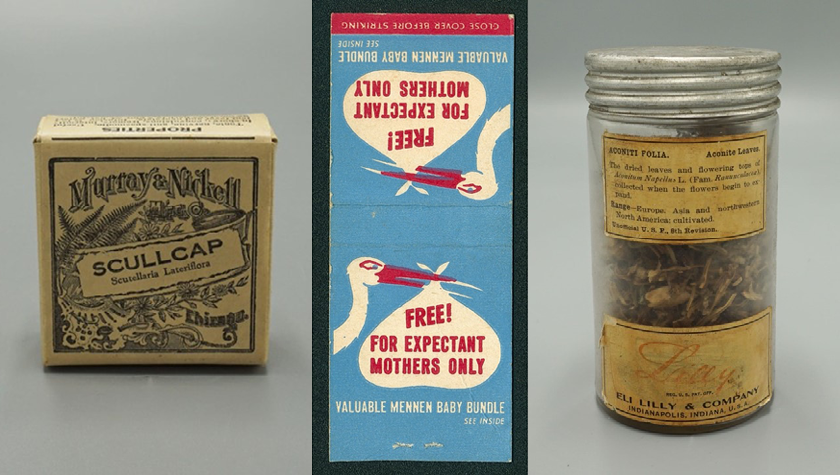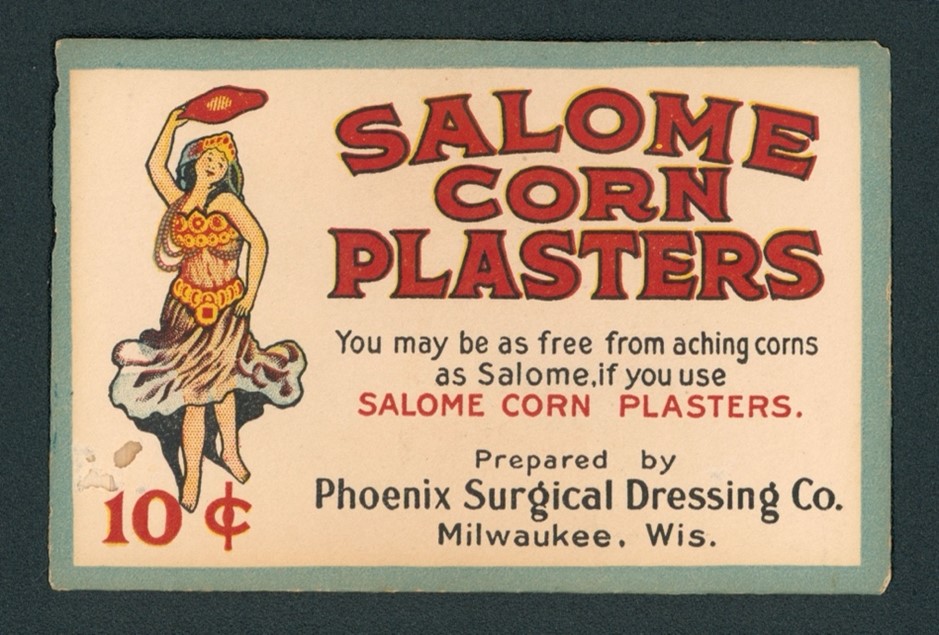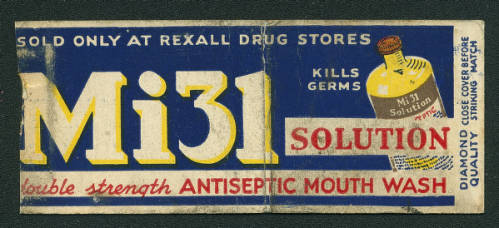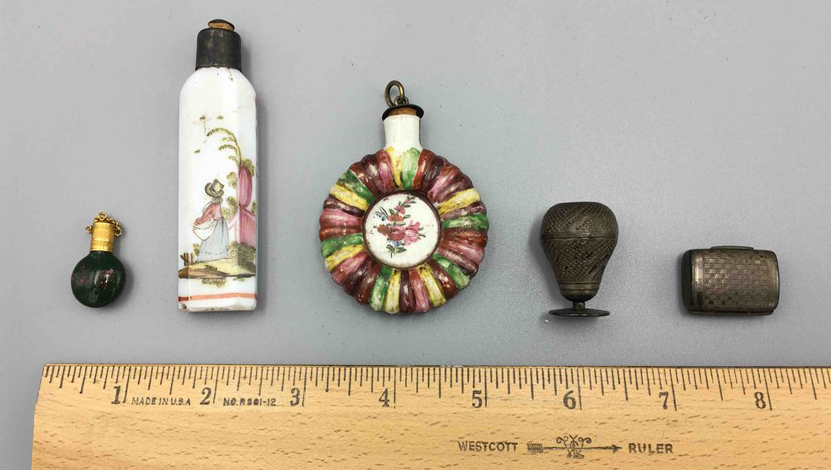
The UW–Madison School of Pharmacy and AIHP are making history accessible with a newly launched digital archive
By Logan Underwood
While digging through the Edward Kremers Research Library and Archives (EKRLA), housed within the University of Wisconsin–Madison School of Pharmacy and the American Institute of the History of Pharmacy (AIHP), researchers often find themselves lost in time — captivated by century-old pharmacy advertisements, matchbooks, and handbills that offer a glimpse into the past. For the first time, through a 2022 grant from the National Endowment for the Humanities, those collections are now readily available online.
So far, nearly 1,800 rare and fragile pharmacy archival items and artifacts have been digitized — from a collection of Eli Lilly crude drug jars to the Charles R. Weiss Ephemera Collection — and are now readily available to researchers, students, and history enthusiasts.

“Pharmacists have always been cornerstones in the healthcare system,” says Lucas Richert, professor of Social and Administrative Sciences and AIHP historical director. “The collections chart the evolution of pharmacy’s professional identity like few others in the world. What’s most important is that we get more support and more researchers to help communicate the important untold stories of pharmacy.”
The team to digitize the history of pharmacy collection includes archivist Hannah Swan, program manager Kristen Huset, AIHP Assistant Director Beth Fisher, and senior lecturer and AIHP Fischelis Scholar Greg Higby — one of the leading historians of pharmacy over the past 30 years, according to Richert.
“The new digital collections represent years of work of appraisal, selection, scanning, post-production, metadata creation, and ingestion. I am incredibly proud of the end result, which brings together materials showcasing the breadth and diversity of pharmacy history, from manufacturing and advertising to community and social pharmacy,” says Swan. “My hope is that the collections will reach researchers beyond the history of pharmacy community, as the materials speak just as much to histories of design, gender, labor, and print production.”
With the first wave of artifacts and archival materials — representing the diverse and innovative history of pharmacy — now available to explore, the project has a lot of room to grow. Richert, the School’s George Urdang Chair in the History of Pharmacy, shares his thoughts on the significance of the collection, his favorite finds, and what’s next for this evolving digital archive.
Why digitize?

We digitize materials to make them more accessible and to protect them. Without digitization, researchers have to visit us at the School physically. As much as we like having visitors in EKRLA, digitization allows people from around the world access to these materials. This project will also help make items more discoverable by researchers who may not even know about us. Our collection is now discoverable using an internet search, so researchers who aren’t familiar with our collection can find resources previously unknown to them.
Digitization also helps protect high-use materials because they’ll be handled less frequently and it will protect our delicate materials. What was once available for viewing years ago may become too fragile to handle a few years from now.
Do you have a favorite item in the collections?
That’s hard to pinpoint because we have some really exceptional items in the collection. AIHP, with whom the School of Pharmacy shares ownership of the EKRLA and I am the executive director of, recently started a social media campaign where staff pick a favorite item and post a picture of it with a description of it on our Instagram and Facebook pages. It’s been a fun way to share and highlight different pieces from the digitized collection.
So far, staff have picked crude drug containers, a matchbook, corn plaster packaging, and a document from our archive that starts off with “DON’T OPEN, But give this to your Wife, Sister or Daughter.” Inside is an invitation to a Waupaca meeting of the Wisconsin Pharmaceutical Association, where the Ladies Auxiliary had a host of activities planned for the women in attendance — a pumpkin race, a nail driving contest, an egg and spoon race. It offers a glimpse into the wider social history of pharmacy in 1900.
What items are particularly rare?
As a whole, our collections are one-of-a-kind. We’ve focused our efforts on the ephemera portion of our collection for digitization because ephemera is typically made to be used and then thrown away, like handbills, matchbooks, and calendars. As such, large collections of these items tend to be rare. The ephemera collection contains a wide range of tangible items that document many of the ways in which people encountered images of and information about pharmacy, drugs, medicines, and public health throughout the late 19th and 20th centuries.

These diverse items document the circulation of knowledge about pharmacy, pharmaceuticals, drugs, medicines, and public health between and among manufacturers, pharmacies, drugstores, public health authorities, pharmacy organizations, and consumers. The ephemera collection allows researchers to better understand the ways in which people have encountered, discovered, and understood information and knowledge about drugs, medicines, pharmacy, and healthcare.
What about the rest of the EKRLA?
Our archival collection comprises roughly 1,000 cubic feet in over 100 filing cabinets (about 660 drawers). We are only digitizing 900 items from this collection, just a small portion of the entire collection. As we finish these portions of the collection, we’ll focus our energies on identifying portions of the collection that aren’t well represented digitally in other organization’s collections with the goal of making accessible materials that no one else has.
What’s next?
We are planning an exhibit with these works as part of the grant-funded project but why stop at one? We anticipate creating more exhibits as we continue digitizing and in response to current events. The digital realm allows us to expand our footprint and reach beyond physical limitations of space and distance.
Any tips for wading into the collections?
I would recommend starting at the home page of the digital collection and poking around. It’s pretty easy to use, with filters and an advanced search function, and there are collection descriptions and a photo that gives you an idea of what you might find. It’s easy to lose time when you start looking at everything. This often happens to us when we are working in the physical collection. You’ll be putting something away and notice something really cool, and the next thing you know, 15 minutes have passed.
